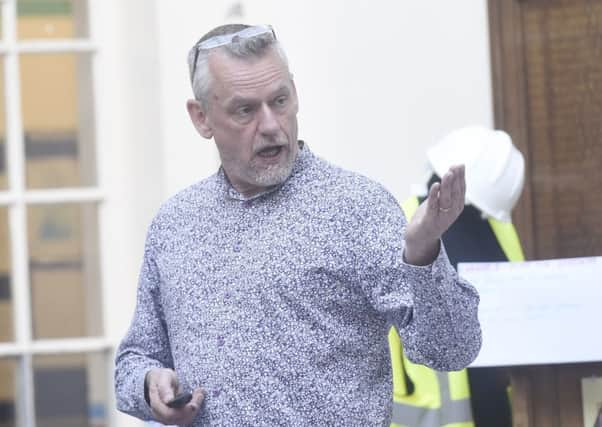Architect Malcolm Fraser says school closures show folly of PFI scheme
This article contains affiliate links. We may earn a small commission on items purchased through this article, but that does not affect our editorial judgement.


Mr Fraser resigned from a Scottish Executive advisory panel in 2007 because of his concerns over the Private Finance Intitiative (PFI) under which the 17 schools were built.
He said: “The whole industry, everyone realised these buildings were shoddy and they were shoddy in every sort of way - in terms of quality of the environment made for the children and financially they were unbelievably expensive and they were purely an ideological route, they were not good for the public purse, they were not good for education and we are seeing what has come out of that now.”
Advertisement
Hide AdAdvertisement
Hide AdDOWNLOAD THE EDINBURGH EVENING NEWS APP ON ITUNES OR GOOGLE PLAY
He said he had been concerned at the time about the design of the buildings.
“There was no care or concern going into the buildings themselves. Often good Victorian or even 1960s schools, like Craigmount was, were being replaced by inferior contemporary buildings and there was this vast financial and ideological pressure on councils to show they cared about children by spending money. And the government was very keen these complex financial models be used that enriched lawyers and bankers but impoverished the public built environment.”
SCHOOL CLOSURE CRISIS
Advertisement
Hide AdAdvertisement
Hide AdMr Fraser said government and local authorities could borrow cheaply and invest in new schools.
“Instead the government borrowed on the never never, using these private deals and believed they were off balance sheet and they therefore didn’t need to show them in the balance of payments. Europe has subsequently ruled that’s not the case. So there was a narrow justification at the time that they didn’t need to show them in public borrowing, but that has since been proved false.
“All of this proves that the best thing the public sector can do is borrow, invest and control and not pass such important matters over to the private sector.”
And he criticised the way PFI operated.
“Things can go wrong on site under any method, but it is particular that this sort of method is one of self regulation. Contractors are trusted to police themselves, so in cases like this there is no independent engineer, no independent architect that are tasked to stand outside the process, inspect the work and ensure these sort of things don’t happen.”
Advertisement
Hide AdAdvertisement
Hide AdMr Fraser also spoke about the difficulty of carrying out checks on buildings.
“When everything is covered up it’s very hard to tell where these other problems might lie. You almost need to take a school to bits to find out that these issues are there. You don’t really understand there is a problem until something catastrophic goes wrong, as it has at Oxgangs which has led to all these other inspections.”
And he agreed other buildings could also have problems.
“Schools, hospitals, police stations - all sorts of public buildings came through this. There is a possibility in all sorts of directions.
“We should not necessarily say this means all PPP buildings are going to have problems. We can hope it is isolated to this particular contractor and these particular schools. But for me it is emblematic of the bigger issues when we cede responsibility to the private sector to provide vital public infrastructure.”